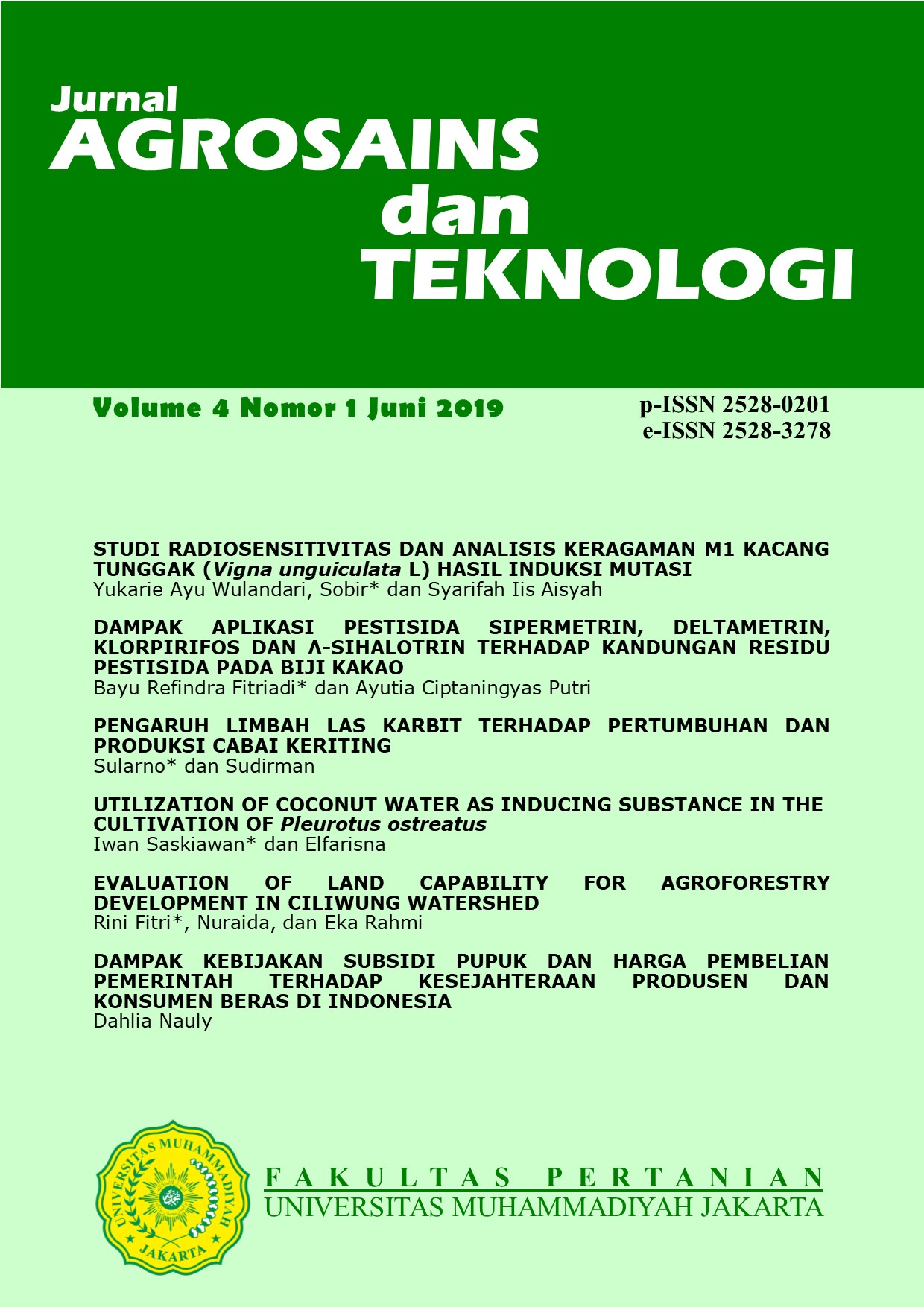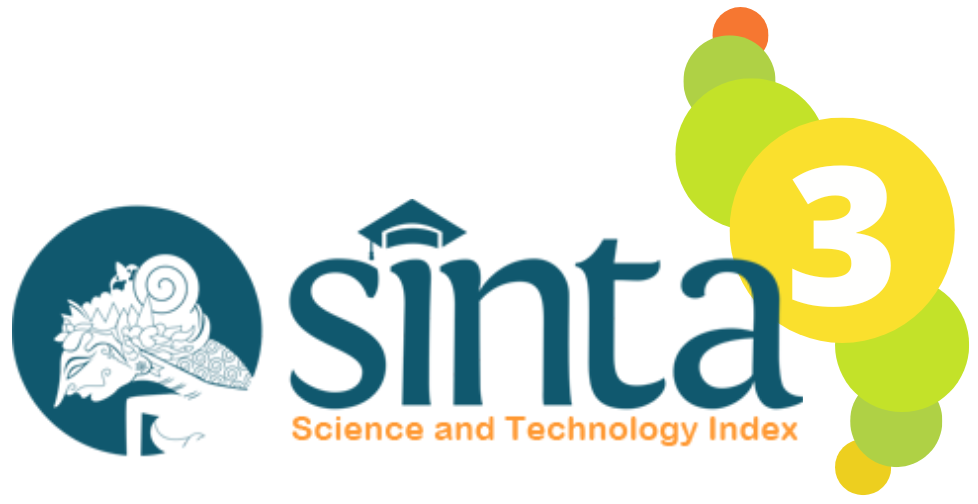Utilization of coconut water as inducing substance in the cultivation of Pleurotus ostreatus
DOI:
https://doi.org/10.24853/jat.4.1.25-30Abstract
Cultivation of edible mushrooms has been evaluated as an effective way for increasing income of people in developing countries. Pleurotus ostreatus, well known as an oyster mushroom is the most popular edible mushroom in Indonesia. They usually is cultivated using a sawdust as a main substrate. The aim of this research is to reveal the addition of coconut water, the byproduct of traditionally coconut process as an inducing substance in P. ostreatus cultivation. The results shown that the addition 25% (v/v) of coconut water in substrate of P. ostreatus induce the growth of mycelium. On the other hand, the addition of 50% (v/v) of coconut water affect in the day of fruit body formation become faster as well as increase the number of pileus (stalk) and the weight of fruit body.References
Belletini MB., Fiorda FA., Maieves HA., Teixeira GL., Avila S., Hornung, PS., Junior AM., and Ribani RH. 2019. Factor affecting mushroom Pleurotus spp. Saudi Journal of Biological Sciences, 26: 633-646
De Leon AM., Reyes RG., and Dela Cruz TEE. 2013. Lentinus squarrosulus and Polyporus grammocephalus: newly domesticate, wild edible macrofungi from the Philippines. The Philippine Agricultural Scientist, 96 (4): 411-418
Islam MDT., Zakaria Z., Hamidin N., and Mohdishak MAB. 2016. Effects of natural environment and increased ranges of humidity for indoor cultivation of grey oyster (Pleurotus pulmonarius) mushroom in Malaysia. International Journal of Advances in Science Engineering and Technology, 4(2):121-127
Islam W. and Riaz A. 2017. Yield and Biological Efficiency of Pleurotus ostreatus (Jacq. Fr.) cultivated upon various weeds and agricultural wastes. Pakistan Journal Weed Science Research, 23(3): 271-279
Jacob JKS., Kalaw SPK., and Reyes RG. 2015. Mycelial growth performance of three species of Pleurotus on Coconut Water Gelatin. Current Research in Environtmental and Applied Mycology, 5 (3): 263-268
Kues U., and Liu Y. 2000. Fruiting body production in Basidiomycetes. Applied Microbiology Biotechnology, 54: 141-152
Kumar K. 2015. Role of edible mushrooms as functional foods-A review. South Asian Journal of Food Technology and Environment, 1 (3&4): 211 -218
Magday Jr. JC., Bungihan ME., and Dulay RMR. 2014. Optimization of mycelial growth and cultivation of fruiting body of Philippine wild strain of Ganoderma lucidum. Current Research in Environmental & Applied Mycology, 4(2), 162-172
Mandel QA., Al-Lait AA., and Mohamed, SA. 2005. Cultivation of oyster mushrooms (Pleurotus spp.) on various lignocellulosic wastes. World Journal of Microbiology& Biotechnology, 21:601–607
Prades A., Dornier M., Diop N., and Pain JP. 2012. Coconut water uses, composition and properties: a review. Fruits, 67: 87-107
Saskiawan I., Hasanah N., and Shimomura N. 2016. Cultivation of Pleurotus ostreatus using sorghum-supplemented spawn on various substrates. Mushroom Science and Biotechnology, 23 (4): 179-182
Stamets P. 2000. Growing gourmet and medicinal mushrooms. Ten Speed Press. Box 7123 Berkeley, California. USA page: 313
Yong JWH., Ge L., Ng YF., and Tan SN. 2009. The chemical composition and biological properties of coconut (Cocos nucifera L.) Water. Molecules, 14: 5144-5164











